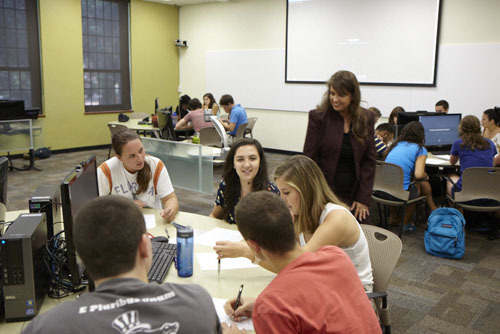
Is your classroom space designed to promote effective teacher and student engagement and inspire 21st century learning?
Technology continues to change the way we think about traditional learning spaces. Desde 2007, Herman Miller has been researching, along with higher education institutions nationally, how to create the most productive “learning studios.” The Learning Spaces Research Program gave educators the ability to manipulate classroom spaces to support different learning objectives. Students and instructors were surveyed before, during and after their learning studio semester. Em última análise, students and teachers reported an 18 percent increase in student satisfaction when experiencing the Learning Studio environment in comparison to a traditional classroom.
Technology can enhance the impact of a learning space but how can educators ensure the focus remains on pedagogy first? What are some of the design strategies to consider? How should an education institution with a limited budget approach the reconfiguration of its classroom space? I invited Jeff Vredevoogd, Director of Herman Miller Education, to make the case for space in A Pesquisa Global para a Educação series today. Jeff leads Herman Miller’s efforts to expand the understanding of evolving learning trends in higher education environments.
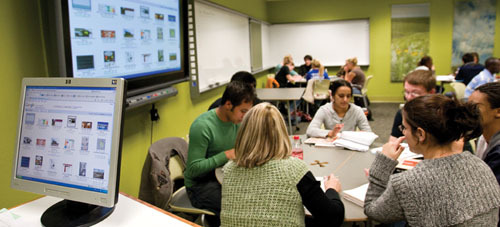
How has learning in a technology driven environment changed the way we need to think about traditional learning spaces?
Technology empowers faculty to implement a variety of pedagogical methods while also helping students engage with content in a much more meaningful and impactful way. Multipoint projection, tablets, videoconferencing and other technologies enable students to extend their learning beyond the four walls of the classroom. The ballooning popularity of MOOCs and online courses has also created a new world of education – one where learning can occur anytime, anywhere and with anyone.
Despite this reality, the physical learning environment remains more relevant to student success and workforce placement than ever due to one primary factor: presença. In combination with key technology, learning studios have the power to nurture the “mundo real” behaviors that only truly occur in person, including collaboration and engagement.
Technology can enhance the impact of a learning space; contudo, it is also easy for decision makers to be consumed by it. We have seen some institutions make the mistake of allowing the technology to drive the learning experience as opposed to supporting the desired experience with the right level of technology. They have allowed the technology to estar the solution vs. allowing it to enable a solution. In order to create great learning spaces, the focus must always be on the desired experience or outcome – placing content and pedagogy first. Only then should decision makers consider the appropriate technology solutions to support what goes on in the classroom.
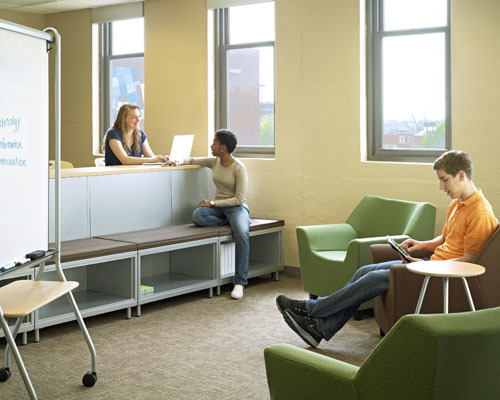
Are education institutions nationally making the design changes needed to meet the evolving requirements of students and faculty? Please share one or two of the best new designs for learning spaces you have seen.
Education institutions are making the design changes needed to meet the evolving requirements for students and faculty, but most are still in the experimentation phase to find the right design that works for their campuses. Leaders are spending more time and focus on addressing the needs of their students – almost seeing them as customers. This is helping them make better immediate and longer-term decisions around this important group of stakeholders. Ao mesmo tempo, leaders are seeing the impact that campus change is having on the role of faculty. The key is to work alongside faculty – collectively planning for new approaches while testing new ways of teaching and learning in a “safe way.” Remember the old saying: Better to do it com me, than a me.
One of our Programa de Pesquisa de Espaços de Aprendizagem parceiros, St. Louis University, created an environment to achieve the right balance between technology and flexibility. The space was outfitted with video walls, teleconferencing, iPads, tablet computers and flexible furnishings so that students and faculty could adapt as needed. Another partner, the University of Florida, took a different approach by situating students in groups of 8-10 with monitors at each table that enabled the free-flow sharing of content. Although not as mobile as the St. Louis University space, the University of Florida still accomplished its goal of creating an active learning environment where collaboration is fostered. Por isso, learning spaces are evolving but no one solution works for every institution.
Budgets are tight. How do you help an educational institution with traditional spaces that wants to make design changes but has limited funds?
Any change on campus should start with a clear statement of “porque” these alterations or upgrades are being considered in the first place.
New approaches to space don’t always necessitate entirely new environments and large investments in order to create impact. Schools can develop new ideas and work within their current spaces – using existing furniture and technology – to begin evaluating the effect they may have on teaching and learning. By concentrating on pedagogy and end-users in learning spaces, campus leaders are able to help move the dial forward in terms of implementing change on campus. This clearer understanding also helps lay the groundwork for when they are ready to invest in design changes.
Programs like the Learning Spaces Resource Program allows for ongoing learning space experimentation and provides opportunities for feedback from both faculty and students, which can inform longer term plans when funding becomes available. One thing has become clear – testing new ideas serves as a way to build excitement and support across campus and may even entice donor support in the process.
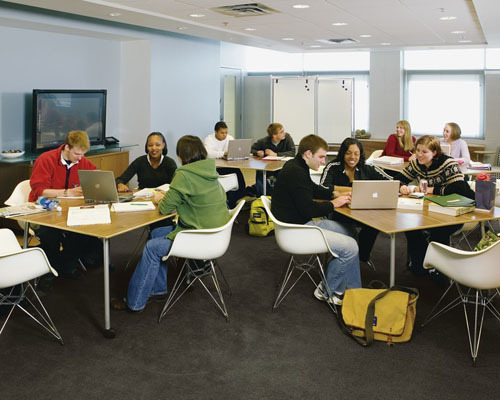
How does the learning studio model improve learning?
The Learning Studio Model is rooted in both primary and secondary research that studies the effect of classroom design on learning. A recent report published in the journal Building and the Environment explains how classroom design can have a 25 percent impact, either positive or negative, on a student’s progress. Our own research conducted over the last seven years complements these findings.
This increased satisfaction is largely due to the Learning Studio’s innate flexibility, which allows the space to be ready for change whenever the faculty and students are. The Learning Studio can support progressive, interactive teaching methods, including small group, role-play and demonstration activities, to help foster collaborative behaviors that simply cannot be taught behind a screen. It also untethers faculty from the front of the classroom, allowing them to engage more directly with students.
Em última análise, research proves students thrive on the ability to interact with peers and faculty, in a compelling way. Learning spaces that work offer interface in conjunction with technology instead of in competition with it. No final, education decision makers can improve not just learning outcomes but the student and faculty experience as a whole.

Photos are courtesy of Herman Miller Education
Na busca Global para a Educação, se juntar a mim e líderes de renome mundial, incluindo Sir Michael Barber (Reino Unido), Dr. Michael Bloco (EUA), Dr. Leon Botstein (EUA), Professor Clay Christensen (EUA), Dr. Linda, Darling-Hammond (EUA), Dr. Madhav Chavan (Índia), Professor Michael Fullan (Canadá), Professor Howard Gardner (EUA), Professor Andy Hargreaves (EUA), Professor Yvonne Hellman (Holanda), Professor Kristin Helstad (Noruega), Jean Hendrickson (EUA), Professor Rose Hipkins (Nova Zelândia), Professor Cornelia Hoogland (Canadá), Honrosa Jeff Johnson (Canadá), Senhora. Chantal Kaufmann (Bélgica), Dr. Eija Kauppinen (Finlândia), Secretário de Estado Tapio Kosunen (Finlândia), Professor Dominique Lafontaine (Bélgica), Professor Hugh Lauder (Reino Unido), Professor Ben Levin (Canadá), Senhor Ken Macdonald (Reino Unido), Professor Barry McGaw (Austrália), Shiv Nadar (Índia), Professor R. Natarajan (Índia), Dr. PAK NG (Cingapura), Dr. Denise Papa (US), Sridhar Rajagopalan (Índia), Dr. Diane Ravitch (EUA), Richard Wilson Riley (EUA), Sir Ken Robinson (Reino Unido), Professor Pasi Sahlberg (Finlândia), Professor Manabu Sato (Japão), Andreas Schleicher (PISA, OCDE), Dr. Anthony Seldon (Reino Unido), Dr. David Shaffer (EUA), Dr. Kirsten Immersive Are (Noruega), Chanceler Stephen Spahn (EUA), Yves Theze (Lycée Français EUA), Professor Charles Ungerleider (Canadá), Professor Tony Wagner (EUA), Sir David Watson (Reino Unido), Professor Dylan Wiliam (Reino Unido), Dr. Mark Wormald (Reino Unido), Professor Theo Wubbels (Holanda), Professor Michael Young (Reino Unido), e Professor Minxuan Zhang (China) como eles exploram as grandes questões da educação imagem que todas as nações enfrentam hoje. A Pesquisa Global para Educação Comunitária Página
C. M. Rubin é o autor de duas séries on-line lido pelo qual ela recebeu uma 2011 Upton Sinclair prêmio, “A Pesquisa Global para a Educação” e “Como vamos Leia?” Ela também é autora de três livros mais vendidos, Incluindo The Real Alice no País das Maravilhas, e é o editor de CMRubinWorld.
Siga C. M. Rubin no Twitter: www.twitter.com/@cmrubinworld


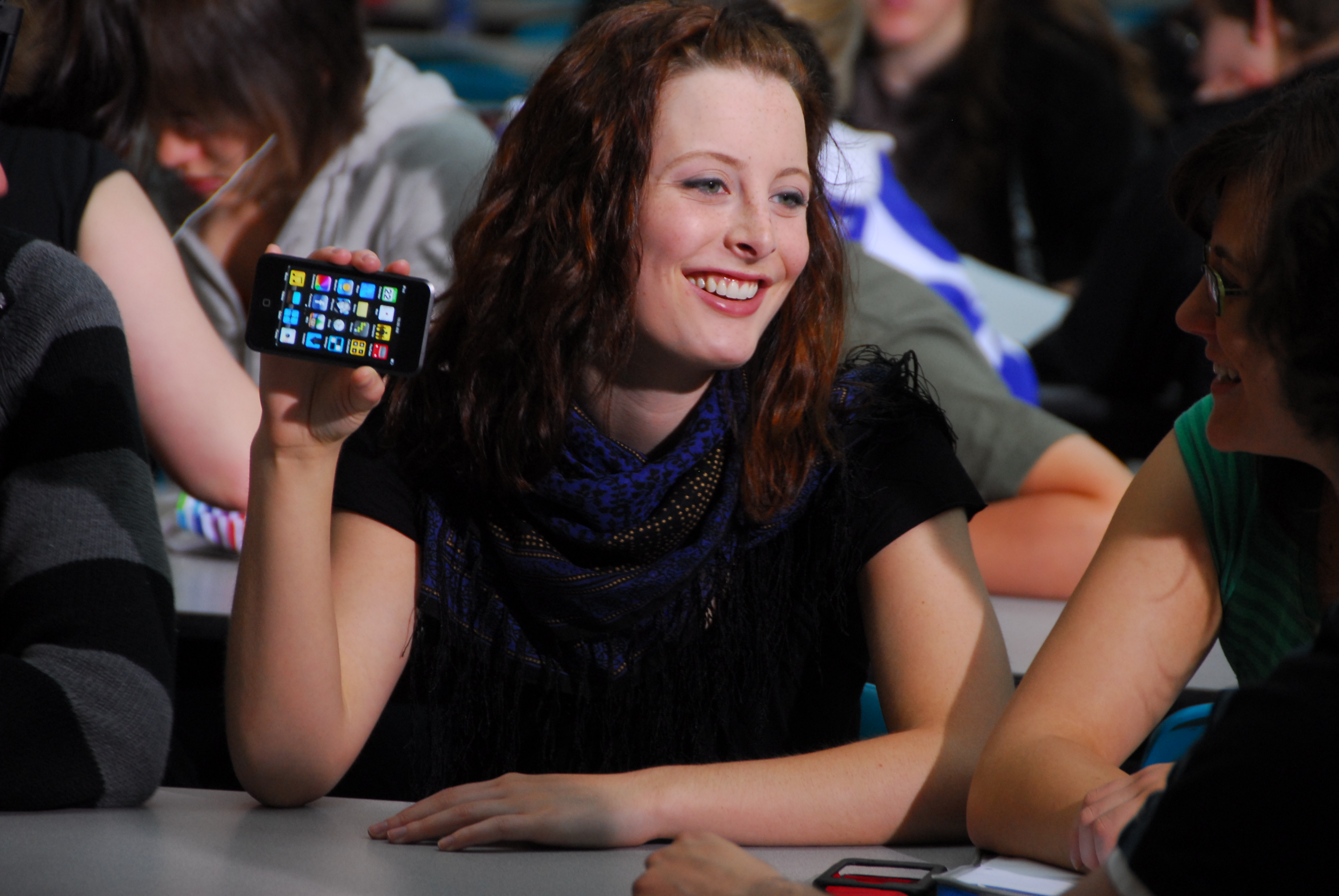
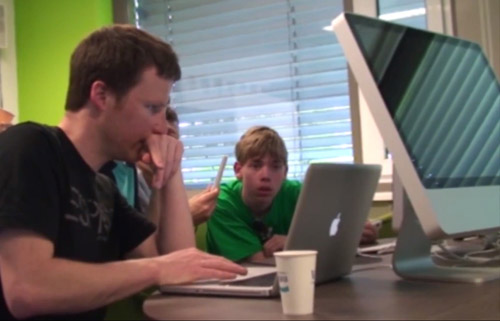
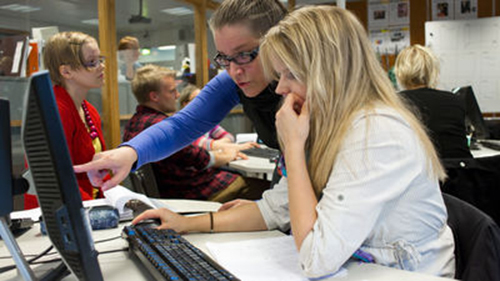
Comentários Recentes